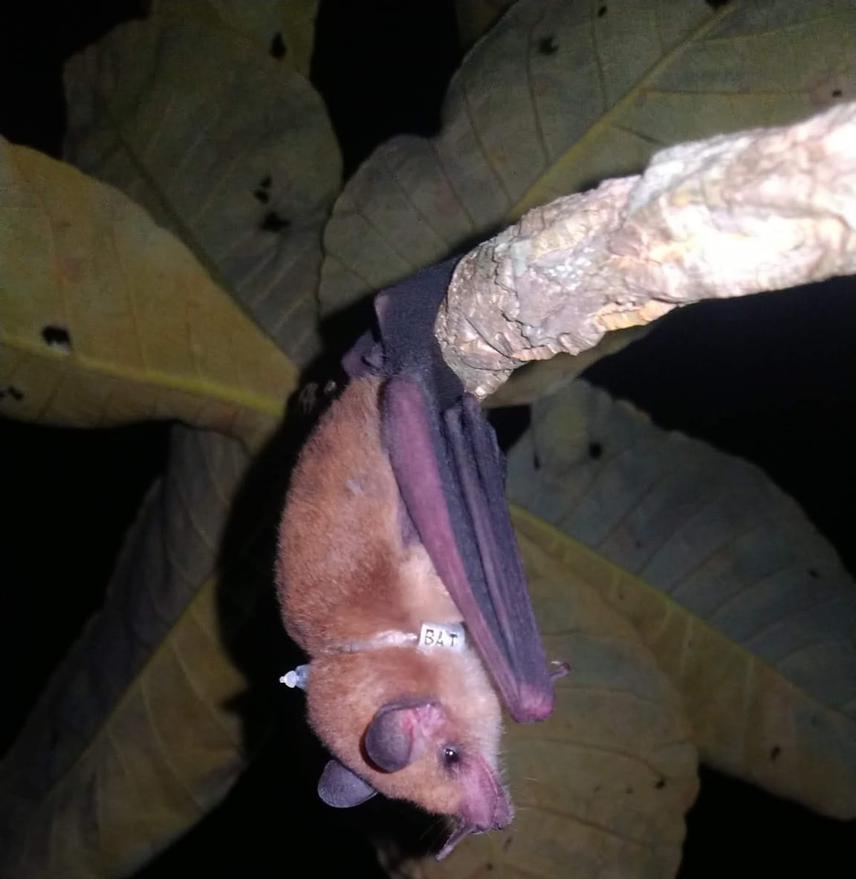Ugo Mendes Diniz
The project aims to reconstruct the interaction network between plants and flower-visiting bats (Chiroptera: Phyllostomidae) in middle-western Brazil, given the lack of information regarding the resource use and feeding preferences of these animals at a community level. We expect to use the theory of ecological networks to identify key resource species for nectar bats and their foraging patterns, and to acquire a data on their species-specific degrees of specialization to flowering plants. The project will be carried out at the heart of the Brazilian Cerrado, a rich neotropical savannah that currently undergoes a severe and chronic loss of biodiversity due to the encroachment by urban areas and agricultural lands. Because the Cerrado is home to endangered species of nectar bats, we aim to quantify the vulnerability of the community in face of such threats and extract implications for its conservation and for the management of protected areas.

One individual of the endangered nectar bat Lonchophylla dekeyseri resting on a tree.
The ecology of nectar-feeding bats and their resource plants is widely unknown. The Brazilian Cerrado is a rich neotropical savannah containing several nectar bat species, but it is under severe threat due to the expansion of urban and agricultural matrices. The conservation of flower-visiting bats, the plants associated to them, and the ecosystem processes they deliver is further hampered by the lack of knowledge regarding bat-plant interactions at a community level. The research on the topic of bat-pollination in the Cerrado can be summed up mostly to isolated, case-study works, and we have thus little power to predict the response of interacting species to biodiversity loss. Network theory is an efficient conceptual framework to evaluate the structure of community-wide interactions and yields valuable data on the patterns and mechanisms underlying them. Furthermore, it allows for the assessment of the stability of the community in the face of further loss of biodiversity in the region.
This project will thoroughly describe the pollination network between bats and plants within a protected area of the Cerrado in a year-round experimental design, including both specialized and unspecialized, opportunistic nectar bats in the network. Additionally, it will simultaneously measure flowering intensities of the plant community along a time series. As such, this project aims to answer the following questions: Does the pollination network metrics resemble those expected for other mutualistic networks (nestedness, asymmetry, heterogeneity)? How robust is the network to the risk of further biodiversity loss in the biome? What is the effect of plant phenological variation on the structure of the network? What is the role of opportunistic nectar bats in increasing or reducing its robustness? Is the extent of the protected area sufficient for the foraging activities of nectar bats? We expect to deliver a clear picture of which are the key resource plants for the bats in the park year-round, which bats deliver most of the ecosystem service (i.e. pollination) and how fragile is the structuring process of the links between species. This information is of conservation value, as it may serve as the foundation of management strategies regarding the fauna and flora within the park and as a means of valuing the role of protected areas in preserving ecosystem processes. Furthermore, it is critical for understanding the trophic dependences of the endangered nectar bat species Lonchophylla dekeyseri and L. bokermanii, which are endemic to the Brazilian Cerrado and whose populations currently undergo consistent declines.